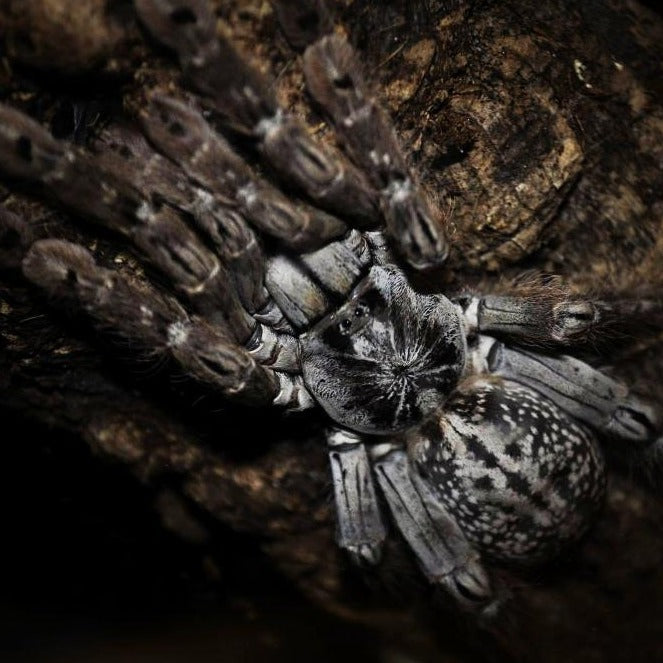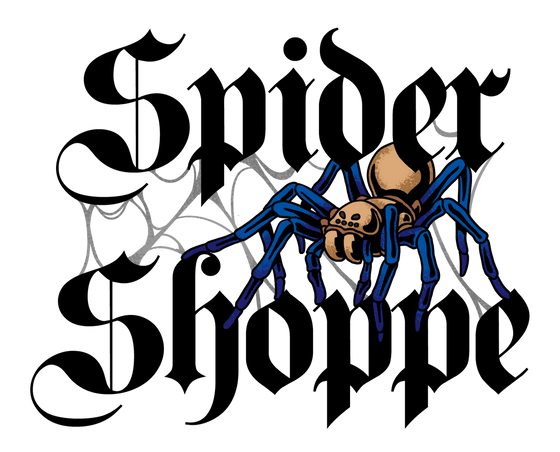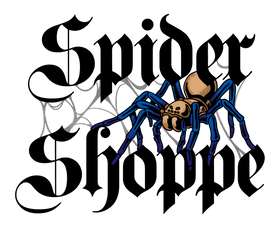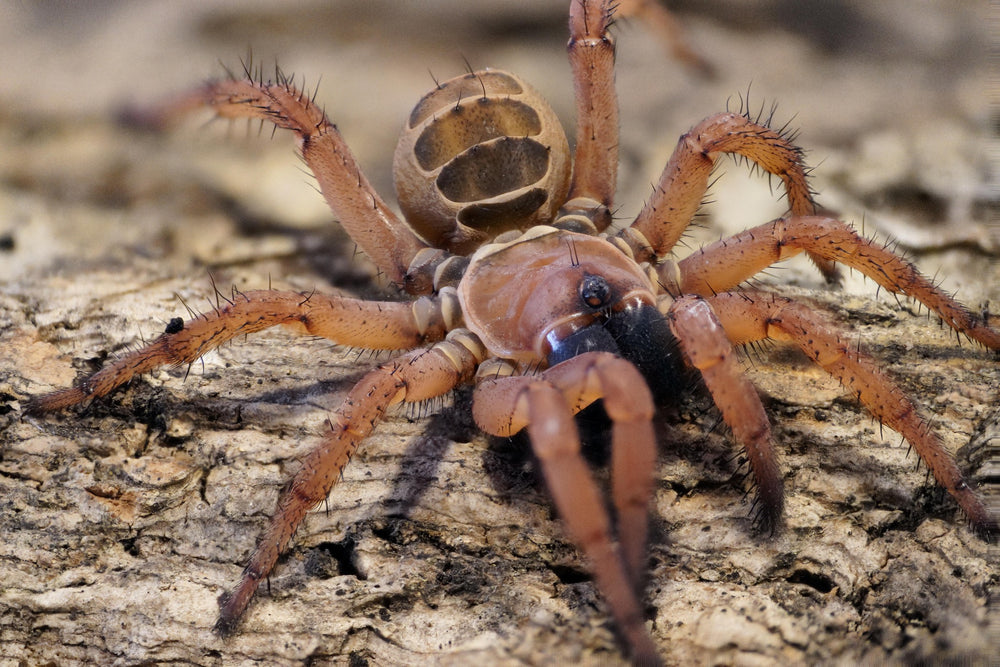
Heteroscodra maculata (Togo Starburst Baboon) 2.5-3" FEMALE
- Live Arrival Guarantee
- Live Animals Ship FedEx Priority Overnight (Mon-Weds)
- In stock, ready to ship
- Inventory on the way
A lightning fast skeletal ghost of the trees, the Togo Starburst Baboon, Heteroscodra maculata Pocock is an incredibly beautiful arboreal baboon spider of Togo, Cameroon and Ghana that demands respect. These shy spiders are lightning fast and have quite potent venom, even by Old World tarantula standards. H. maculata will not hesitate to bite if surprised, so this is not a spider to be handled. They are most suitable for those with some experience working with other Old World tarantulas.
Disclaimers aside, H. maculata is a fascinating and rewarding theraphosid to work with. These baboon spiders have convergently evolved a strikingly similar white and gray on black color palette to another tarantula lineage (Asian Poecilotheria), but they are more morbidly clad- reminiscent of skeletons and ivory. These colors help camouflage H. maculata in its natural habitat. Long, marginal pink setae also aid in camouflage and add another element of beauty to these furtive spiders. The bone-like tones are made insidious when contrasted with flashing dark green iridescence of the tarsal pads during dynamic threat displays. H. maculata are also unusually stocky for a tree spider, with stout anterior (hind) legs, almost reminiscent of Hysterocrates. The carapace is streamlined, though quite thick and robust. Even their medial eyes seem proportionately larger relative to their body size than those of many other tarantulas. This is one unit of a spider. These are not the largest tarantulas, topping out at about 4-5” diagonak leg span.
H. maculata is incredibly tough and as hardy as many of the other baboon spiders. They start out life as black to dark green-gray spiderlings, growing rapidly if fed well and maturing to frosted gray and white tones toward maturity. These tarantulas flourish in mostly dry, deep-substrate arboreal enclosures as they gain size. Cork slab hides, sticks and dried leaves can be great cage additions. H. maculata are copious webbers that will often nearly fill their entire enclosures with thick sheets of silk. They have a strong appetite but are easy to spook, so beware when opening the cage and cleaning or transferring these tarantulas to other enclosures. The Togo Starburst Baboon is most at home when its cage is situated in a dark location with little foot traffic, where it can feel safe and comfortable. If you are ready to level up in tarantula intensity and have a love for stunning ornamental arboreals, you definitely should consider working with H. maculata.
References
Pocock, R.I., 1899. On the scorpions, pedipalps, and spiders from tropical West Africa represented in the collection of the British Museum. In Proc. Zool. Soc. London (Vol. 14, pp. 833-885).

Photo by IG @greatlakesherpetology
Info on our shipping policy can be found on our T&C page.



